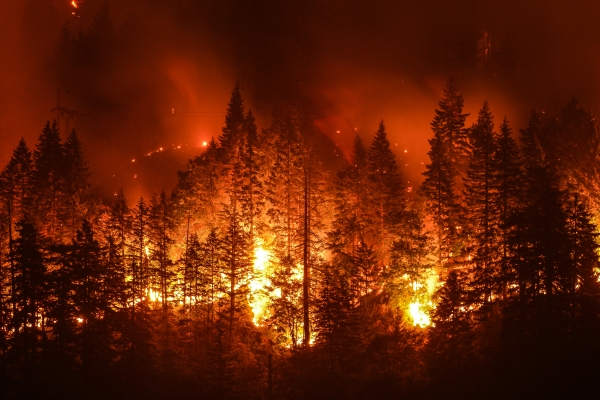
Rainbow Restoration explains why natural disasters are becoming more frequent and severe, impacting communities worldwide.
|
If you live on the Gulf Coast, in Tornado Alley, along the Mississippi River, or in other areas prone to natural disasters, you’ve probably asked the question, “Are natural disasters increasing?”, at least once. According to the World Meteorological Organization (WMO), the simple answer is “Yes.” The number of natural disasters has increased by a factor of five over the last 50 years, driven by climate change, more extreme weather, and improved reporting. If you’ve lived in the same area for many years, you’ve probably noticed factors like higher summer temperatures, intense winter storms, or more rain have inflicted more wear and tear on your home. Besides taking actions like creating a disaster preparedness plan or buying flood insurance, is there anything you can do to protect your home and family from these extreme changes? Luckily, the answer to this question is also “Yes.”
Some Good News
Although climate change—and the extreme weather it creates—has led to an increase in property damage, more sophisticated early warning systems have resulted in three times fewer deaths. This is good news since protecting property is usually much easier than protecting people. The median age for a home in the United States is 37 years and protecting it will be more difficult. However, a few value-adding home improvements will not only provide some peace of mind, they can also protect your investment against the ravages of extreme weather.
Related Topic: After the Flood—Watch Out for These 7 Hazardous Situations
Upgrades That Protect
In some areas, freaky weather isn’t so freaky anymore. Because extreme weather is becoming more commonplace, getting upgrades to protect your home is a good investment. Below are some of the most frequent extreme weather events or disasters and the home upgrades that can help minimize their impact.
-
Weather: Higher Temperatures
Upgrade: “Cool” Roof
If you have a traditional dark-colored roof, consider upgrading to a cool roof coating or lighter-colored shingles. These cool roof options can reduce the surface temperature by 50 to 100 degrees because they reflect sunlight instead of absorbing heat. Keeping your roof cooler will also extend its life, especially if you live in an area with extremely high summer temperatures. -
Weather: Electrical Storms
Upgrade: Standby Generator
Get a permanently installed generator outside your home (fueled by liquid propane or natural gas) or a smaller gasoline-powered portable generator. It will ensure you have electricity to run essential appliances, your central air system, and your sump pump. -
Weather: Hurricane
Upgrade: Impact-resistant Windows, Doors, and Garage Doors
These can reduce the impact from high winds which can cause structural damage to your home. Some added benefits of this upgrade are reduced outside noise, improved home security, and better HVAC efficiency. This upgrade may even qualify you for a reduction in your homeowners’ insurance. -
Disaster: Drought and Wildfire
Upgrade: Fire-Wise Plants
Droughts don’t just make your lawn brown and scruffy—they also create the perfect conditions for wildfires. Incorporating fire-wise landscaping limits the flammable materials around your home. -
Weather: Excessive Rain
Upgrade: Flooding Retrofit
Although a flooding retrofit can be expensive, it may save you money in the long run—especially if your area floods almost every year. Flood retrofitting involves things like elevating your home above flood level and treating certain rooms so they stay watertight for 72 hours.
What If the Worst Happens?
No matter how well you prepare, there may still be times when disaster strikes and your home is affected by high winds, flooding, or fire. If this occurs, the best thing you can do is minimize the damage and have clean-up and repairs done quickly. That’s where Rainbow Restoration comes in! Whether you need water or fire damage restoration, board up and tarp over services, mold removal, or sanitizing and cleaning, our respectful, trustworthy, and trained service professionals will help you find your way back to “normal” as soon as possible. To find out more, call us or request an appointment online.
